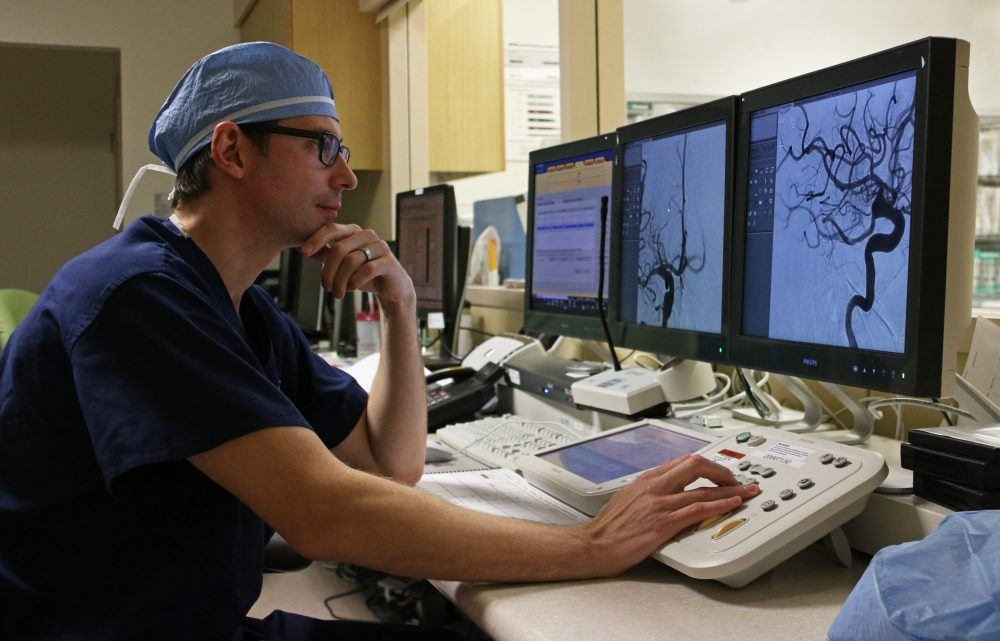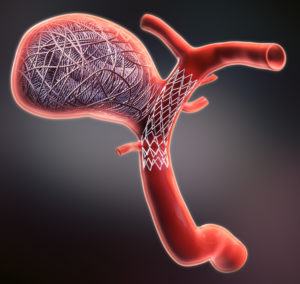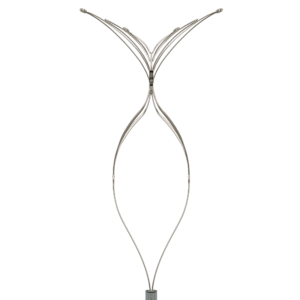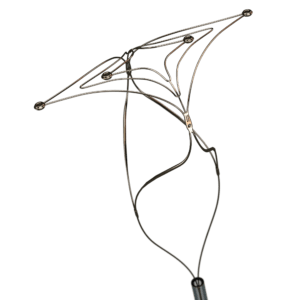
Barrow Is First in Southwest to Use PulseRider Device for Aneurysm Treatment
The U.S. Food and Drug Administration (FDA) recently approved PulseRider under the Humanitarian Device Exemption—a regulatory pathway for medical devices intended to treat rare disorders or conditions.
PulseRider serves as an alternative to the conventional stent that is sometimes used in the endovascular treatment of brain aneurysms. It was specifically designed for broad-necked aneurysms that arise on or near the bifurcation of an artery, where the artery splits into two smaller blood vessels. The branch point of the basilar artery is a common location for aneurysms to form.
An aneurysm is a weak spot in the wall of a blood vessel that balloons out and fills with blood. It can rupture at any time and cause bleeding into the brain, which can result in death or disability. About 30,000 people in the United States suffer a brain aneurysm rupture each year, according to the Brain Aneurysm Foundation.
Addressing Challenges in Bifurcation Aneurysm Treatment
Endovascular surgery allows neurosurgeons to treat aneurysms without opening the skull. In this less-invasive approach, the neurosurgeon delivers platinum coils to the aneurysm using a catheter. The surgeon inserts the catheter into an artery in the groin and guides it through the blood vessels to the aneurysm using X-ray visualization. Placing coils inside the aneurysm decreases the amount and force of blood circulating in it, which causes a clot to form and reduces the risk of rupture.

Some aneurysms, such as those with a wide neck, may require the placement of one or two stents in the blood vessel. These tiny wire cages hold the coils in place.
However, accessing and placing stents at a bifurcation poses an anatomical challenge for endovascular neurosurgeons and may require several steps. Additionally, leaving more metal in the blood vessel can increase the risk of clot formation within the vessel as opposed to within the aneurysm.
“Wide-necked bifurcation aneurysms have traditionally been challenging to treat through an endovascular approach, and treatment of these aneurysms can be associated with significant risk and recurrence,” said Dr. Ducruet, who specializes in endovascular neurosurgery.
PulseRider was designed to overcome these disadvantages. The device consists of significantly less metal than a conventional stent, with the highest density of metal positioned at the neck of the aneurysm and a minimal footprint of metal within the artery itself. After placing the PulseRider, the neurosurgeon still has unrestricted access to the aneurysm due to the open leaflet structure of the device.
“It was also designed so you can position and reposition it before you detach it,” Dr. Ducruet said. “In many ways, it is easier and safer to deploy than the traditional way of treating these aneurysms, which can involve using multiple different stents.”
Placing the PulseRider

The results of a clinical trial, which were published in Neurosurgery in April, showed that PulseRider is safe and offers probable benefit for the treatment of bifurcation aneurysms arising at the basilar tip or carotid terminus. After reviewing the results of this trial, the FDA granted approval for use of the device in select patients.
Barrow is one of the first 20 institutions in the country to treat a patient with the device since the FDA approval.
“Because of our extremely high volume of cerebrovascular patients and our history of contributing to endovascular clinical trials, we get our hands on the latest devices very quickly,” Dr. Ducruet said.
Before his first procedure with PulseRider, Dr. Ducruet underwent special training in which he deployed the device in a flow model in a laboratory setting. But like a stent, PulseRider is delivered through a catheter using standard endovascular techniques.

And although the first Barrow patient to receive PulseRider presented with a challenging aneurysm, he went home the next morning.
“The device worked exactly as expected,” Dr. Ducruet said. “The procedure was straightforward, it was rapid, and we had a very nice result.”
